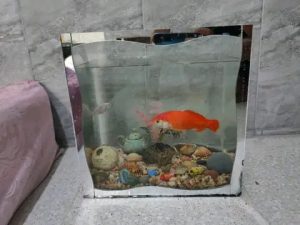Children and Animals in 2025: Is it OK to have pets?
Children and Animals in 2025: Is it OK to have pets? Should you or shouldn’t allow your child to have a pet?

Explore the debate on children and pets in 2025. Discover insights on whether it’s beneficial for kids to have pets and how it impacts their development.
Delve into the discussion of pets and children in 2025. Learn the pros and cons of allowing your child to have a pet and make informed decisions.Uncover the complexities of children having pets in 2025. Find expert opinions and guidance on whether it’s the right choice for your family.
Pets for Children: Can We Let Them Keep Ones?
Introduction:Children and Animals in 2025: Is it OK to have pets?
Children and Animals in 2025: Is it OK to have pets? Should you or shouldn’t allow your child to have a pet?

Pets are a source of joy and companionship for many children, but they can also be a source of concern for parents. Should we let them keep one? And what are the benefits of having a pet for children? In this article, we will explore these questions and provide useful information about pets for children.
1. Benefits of Having a Pet for Children:
Children and Animals in 2025: Is it OK to have pets? Should you or shouldn’t allow your child to have a pet?
1. Enhancing Responsibility:
Keeping a pet can foster responsibility in children, as they learn how to care for and care for animals.
2. Developing Social Skills:
Pets can help children develop social skills, such as communication and cooperation.
3. Enhancing Mental Health:
Keeping a pet can enhance children’s mental health, as it can relieve stress and anxiety.
4. Enhancing Learning:
Pets can help children enhance learning, as they can learn about behavior, biology, and the environment.
2. Which pets are suitable for children?
1. _Dogs:
Dogs are among the most popular pets for children, as they can be companions and loving.
2. _Cats:
Cats are also popular pets for children, as they can be independent and playful.
3. _Fish:
Fish are suitable pets for children, as they can be easy to care for and interesting.
4. _Birds:
Birds are also suitable pets for children, as they can be playful and interesting.
3. _Risks of raising a pet for children:
1. _Infection:
Pets can cause infections in children, especially if they are not cared for properly.
2. _Inflammation:
Pets can cause inflammation in children, especially if they are not cared for properly.
3. _Fear:
Pets can cause fear in children, especially if they are unfamiliar or unloved.
4. Tips for Raising a Pet for Children:
1. Choose an Appropriate Pet: Choose a pet appropriate for the child’s age and interests.
2. Caring for the Pet: Properly care for the pet, including providing food, water, and healthcare.
3. Teaching the Child: Teach the child how to care for and look after the pet.
4. Supervising the Child: Monitor the child while interacting with the pet to ensure their safety and that of the animal.
5. The Relationship between Children and Pets:
Children and Animals in 2025: Is it OK to have pets? Should you or shouldn’t allow your child to have a pet?
Children’s relationship with animals is a unique and important one in a child’s development and character formation. Children are naturally drawn to animals, finding them as companions and a source of entertainment and learning. This relationship can have a significant positive impact on a child’s development, contributing to the enhancement of social, educational, and emotional skills.
First, children’s relationships with animals enhance social skills, as children learn how to communicate and cooperate with animals. Children learn how to care for and look after animals, which contributes to fostering responsibility and empathy. Children also learn how to treat animals in a kind and respectful manner, which contributes to enhancing social and educational skills.
Secondly, children’s relationships with animals contribute to enhancing educational skills, as children learn about behavior, biology, and the environment through observing animals. Children learn about the life cycle, growth, and development by observing animals, which contributes to enhancing their understanding of the natural world. Children also learn about the vital importance of animals in the ecosystem, which contributes to enhancing their environmental awareness.
Thirdly, children’s relationships with animals contribute to enhancing emotional skills, as children learn how to deal with the different feelings and needs of animals. Children learn how to empathize with animals and treat them in a kind and respectful manner, which contributes to enhancing emotional and empathic skills. Children also learn how to cope with loss and grief by observing animals, which contributes to enhancing emotional and empathic skills.
Fourth, children’s relationships with animals contribute to enhancing mental and physical health, as children learn how to cope with stress and anxiety by observing animals. Children learn how to deal with the different feelings and needs of animals, which contributes to enhancing mental and physical health. Children also learn how to cope with loss and grief by observing animals, which contributes to promoting mental and physical health.
In conclusion, children’s relationships with animals are unique and important in a child’s development and character formation. This relationship contributes to enhancing social, educational, and emotional skills, and promoting mental and physical health. Parents and teachers should encourage children to develop this relationship and provide opportunities for learning and growth through it.
_Conclusion:_
Children and Animals in 2025: Is it OK to have pets? Should you or shouldn’t allow your child to have a pet?http://Mfy.one
Pets can be a source of joy and companionship for many children, but they can also be a source of anxiety for parents. It is important to choose a pet appropriate for the child’s age and interests, to care for it properly, and to teach the child how to care for and look after the pet. By following these tips, we can ensure the safety and happiness of both the child and the pet.
Greetings, My Family Bloghttp://My family
